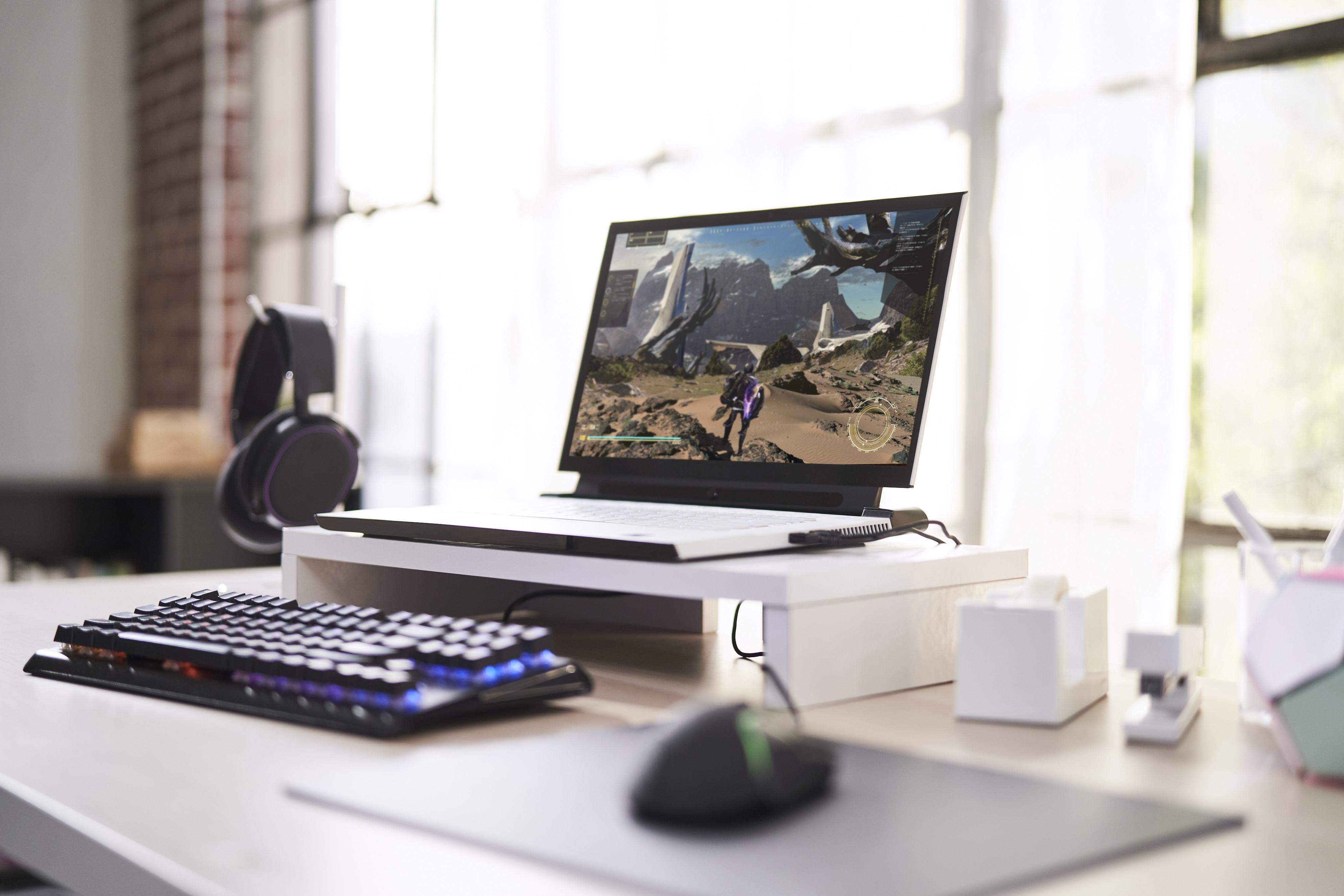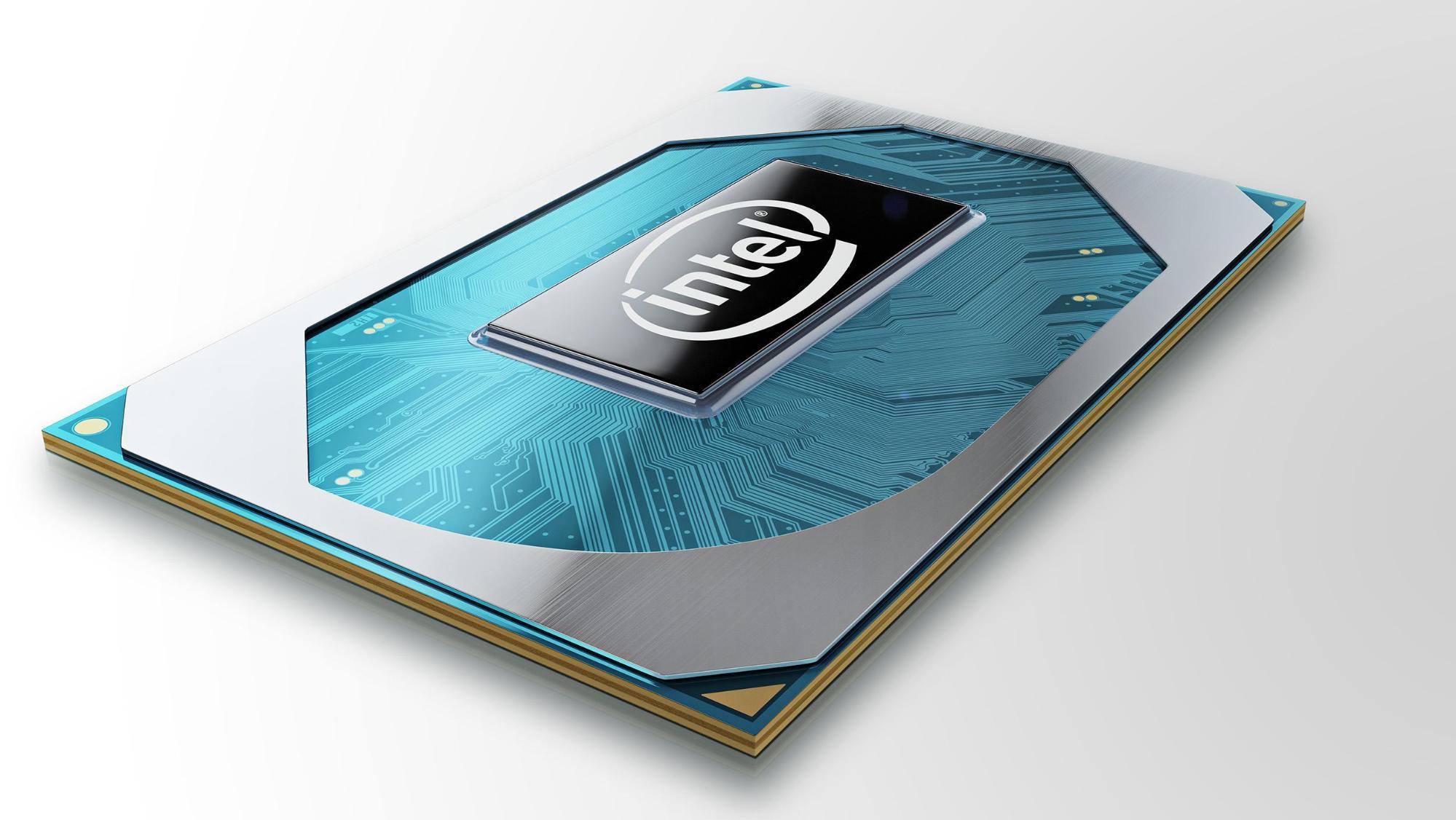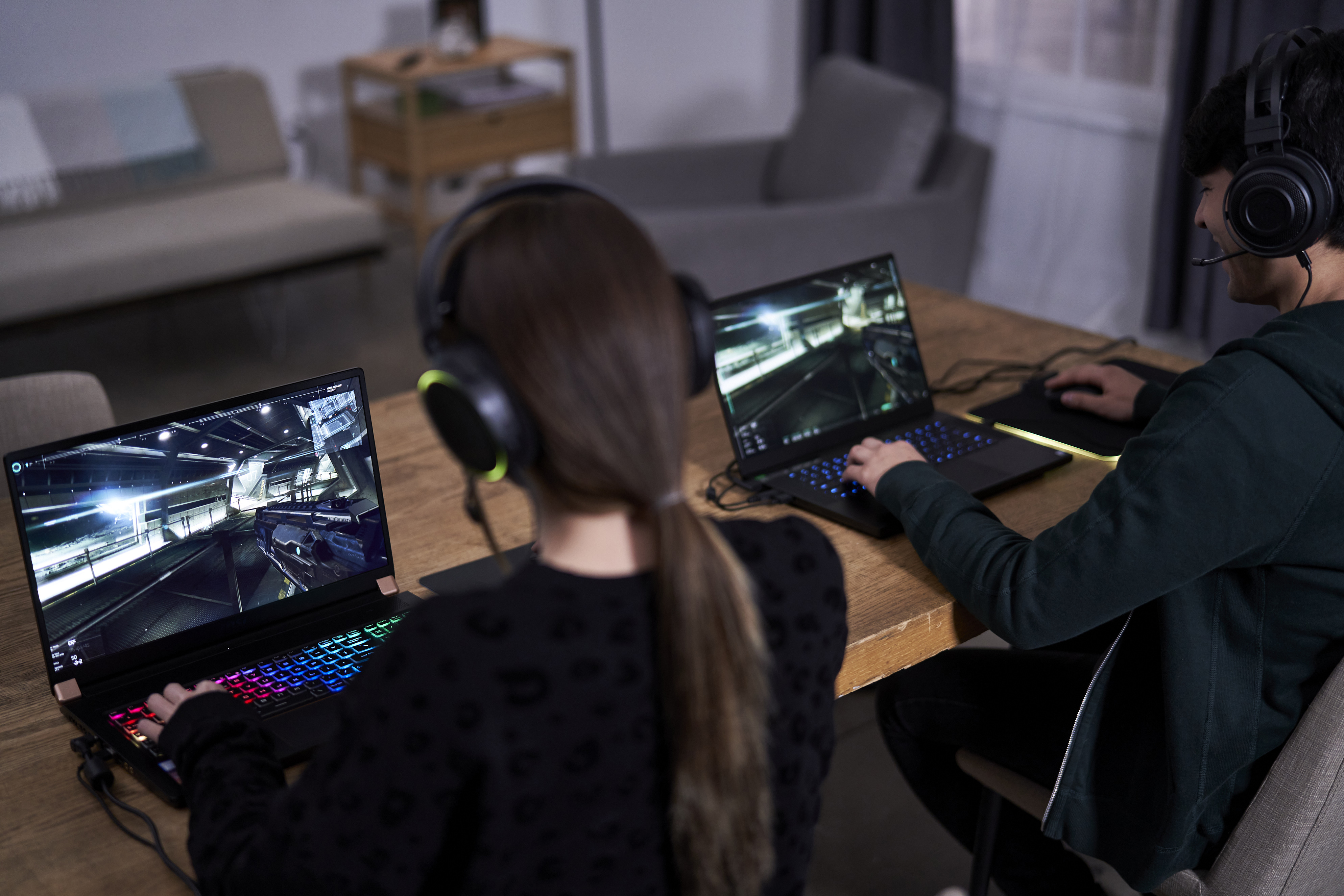How to select your next gaming laptop

Gaming laptops enable desktop-like PC performance in a sleek package and form factor that gives users the freedom to enjoy a high-quality gaming experience anytime, anywhere. Whether you’re in the living room of your home, or sitting at a table in your local coffee shop, a gaming laptop allows you to experience modern gaming at its best.
However, in order to have that experience, you’ll need to know what to look for in a gaming laptop. Systems that provide optimal gaming performance have a lot of different (but very important) components, and understanding how they function and the role they play is critical for understanding what gaming laptop is right for you.
High Frequency Cores
The best way to describe the processor (also known as the Central Processing Unit (CPU)) in a computer is that it’s the brains of the system. As such, processors are one of the most important pieces in gaming laptops. One of the most common questions people ask about CPUs is this: “Which matters more? Cores with a higher frequency, or a higher number of cores?”
When it comes to gaming, an important factor is core frequency, or in layman’s terms, how powerful individual cores are at processing data. This is because most games are optimized to draw from a fewer number of cores that individually have more processing power rather than to use a high number of cores in your system. More cores can be put to work in scenarios such as game+stream+record simultaneously or if you enjoy creating content, but unless you do that, you should focus on individual core frequency.
With beefy top-of-the-line Intel processors such as the Intel® Core™ i9-10980HK, you can have the best of both worlds. Having an individual core up to 5.30 GHz and the ability to overcloc (1) all 8 cores, you get both a high number of cores and an extremely high-frequency maximum for individual ones. When selecting your gaming laptop, aiming for processors like the Intel i9-10980HK or the Intel® Core™ i7-10875H is ideal. The bottom line is to focus on high-frequency cores for your next gaming laptop.
High Refresh/High Fidelity Gaming
For a rich, immersive modern gaming experience, something your gaming laptop will need is a top-tier display that has high refresh rates and high resolution. A display’s refresh rate determines how many frames can be drawn per second, while the fidelity (or resolution) of a screen indicates how many pixels are on the screen. More pixels translates to finer details on the screen.
For an immersive gaming experience, you should aim for 4K and a refresh rate of 60Hz. This type of display allows for up to 60 frames per second while also opening the door for the gorgeous detail of 4K. Alternatively, you could opt for a display with a higher refresh rate such as 144Hz and 240Hz, but with the trade-off of having lower resolutions in the 1080p range. This option will be ideal for competitive players who care more about having the absolute smoothest experience possible. If you want something more affordable, a display that has a 60Hz refresh rate and 1080p resolution will still work well.
No matter what display you opt for, having a powerful mobile CPU, like the recently launched 10th Generation Intel® Core™ H-Series Mobile Processors, in your system is crucial. This is because the CPU directs the graphics card in your system (also known as the GPU) and enables it to efficiently draw frames of each game you play, which in turn allows your GPU to perform up to the level required for your display’s maximum potential to be taken advantage of. If you have a lower-end CPU, your GPU won’t be able to get the high framerates that your display can support. When this happens, your games will look and feel choppy to play, which ruins the experience. We’ll go into more detail about how the CPU, GPU, and display are all interconnected in the next section.
Graphics Performance and Stability

Now that you’ve got a display that has your desired refresh rate and resolution, it’s incredibly important that you select a graphics card that can take advantage of your display’s maximum potential. After all, even if your screen gives you the refresh rate and resolution necessary to enjoy 4K 60 frames per second gaming, it won’t matter if your GPU can’t run your games at that level smoothly.
As emphasized in the previous section, a strong CPU is critical in this area. As the brain of your computer, the CPU tells everything else what to do, and that includes your GPU; if the GPU has more power than the CPU can efficiently direct, then that power isn’t used to improve gaming performance and thus, wasted. Choosing a powerful Intel processor like the Intel Core Mobile i9-10980HK or the i7-10875H can help ensure this doesn’t happen.
Solid Wi-Fi Connection

Modern games typically depend on internet access for a smooth user experience. As such, making sure the device you choose has a quality wireless chip is an important part of selecting a gaming laptop that many people wrongfully overlook. After all, sky-high frame rates won’t help you out if you’re lagging or disconnect, right?
Ideally, you’re going to want to pick a laptop that has a cutting-edge Intel chip in it. This is because the latest Intel-driven platforms support connectivity with Wi-Fi 6, which is the latest Wi-Fi standard that provides the best connection speed and stability there is. On top of this, Intel has spent years collaborating and partnering with different hardware developers to ensure that devices powered by Intel hardware can provide the smoothest, and most lag-free gaming experience on the market (2).
Conclusion

At the end of the day, it’s most important for your system to be balanced. You’ll want both the CPU and the GPU to be of comparable levels of performance so that one doesn’t bottleneck the other; as we said before, an underperforming CPU can hinder the performance of a powerful GPU, and the same is true in reverse. Processing power that isn’t taken advantage of by graphics power is processing power that’s wasted. It’s incredibly important for you to get a processor and a graphics card that match with each other well.
Intel mobile processors provide amazing mobile processing power on the market, and in general, Intel-driven systems provide outstanding experiences relative to market alternatives. Beyond just having the high performing processors and wireless chips, devices powered with Intel technology also have fast dual-channel memory (what the computer loads your game on when you play it). Additionally, they may also have Thunderbolt 3 ports for fast connectivity with peripherals devices and accessories. Finally, gaming laptops powered by Intel may often feature expansive SSDs with fast read and write speeds (where game files are stored) and A-grade keyboards for maximum comfort while gaming, too. These are all things that users should be on the lookout for, as they will make your experience even more enjoyable.
There’s a wide array of excellent choices to select when it comes time to purchase your next gaming laptop. For more information, please visit https://www.intel.com/content/www/us/en/gaming/resources/overview.html.
(1) Disclaimer: No product or component can be absolutely secure. Altering clock frequency or voltage may damage or reduce the useful life of the processor and other system components, and may reduce system stability and performance. Product warranties may not apply if the processor is operated beyond its specifications. Check with the manufacturers of system and components for additional details.
(2) Best in Class Wi-Fi 6: Intel® Wi-Fi 6 (Gig+) products support optional 160 MHz channels, enabling the fastest possible theoretical maximum speeds (2402 Mbps) for typical 2x2 802.11ax PC Wi-Fi products. Premium Intel® Wi-Fi 6 (Gig+) products enable 2-4X faster maximum theoretical speeds compared standard 2x2 (1201 Mbps) or 1x1 (600 Mbps) 802.11ax PC Wi-Fi products, which only support the mandatory requirement of 80 MHz channels.
The biggest gaming news, reviews and hardware deals
Keep up to date with the most important stories and the best deals, as picked by the PC Gamer team.

